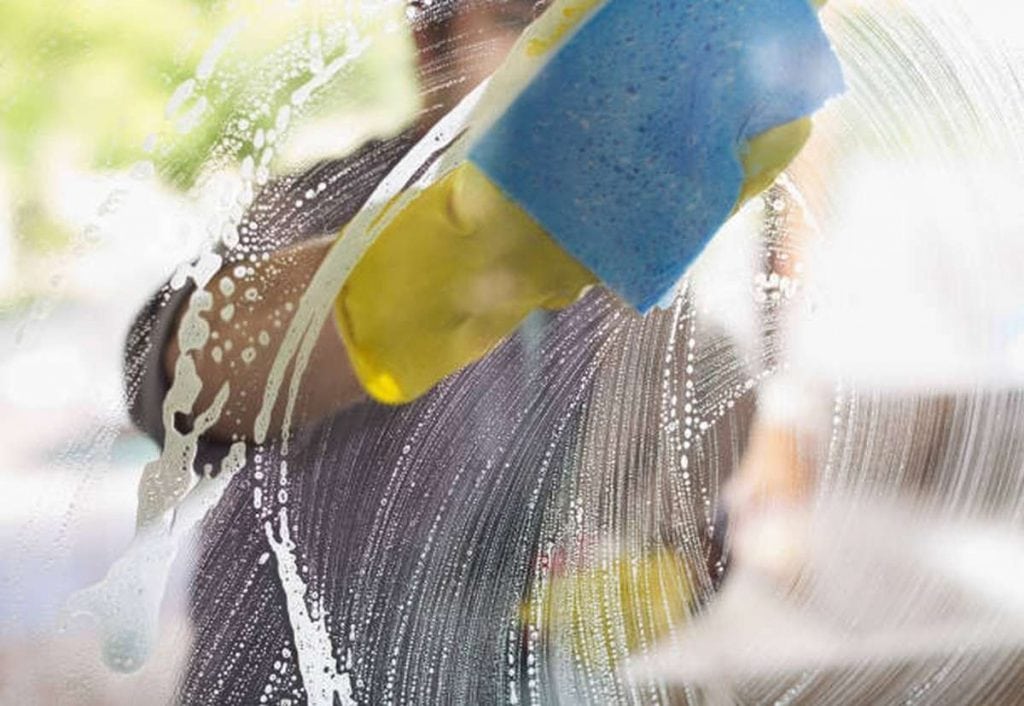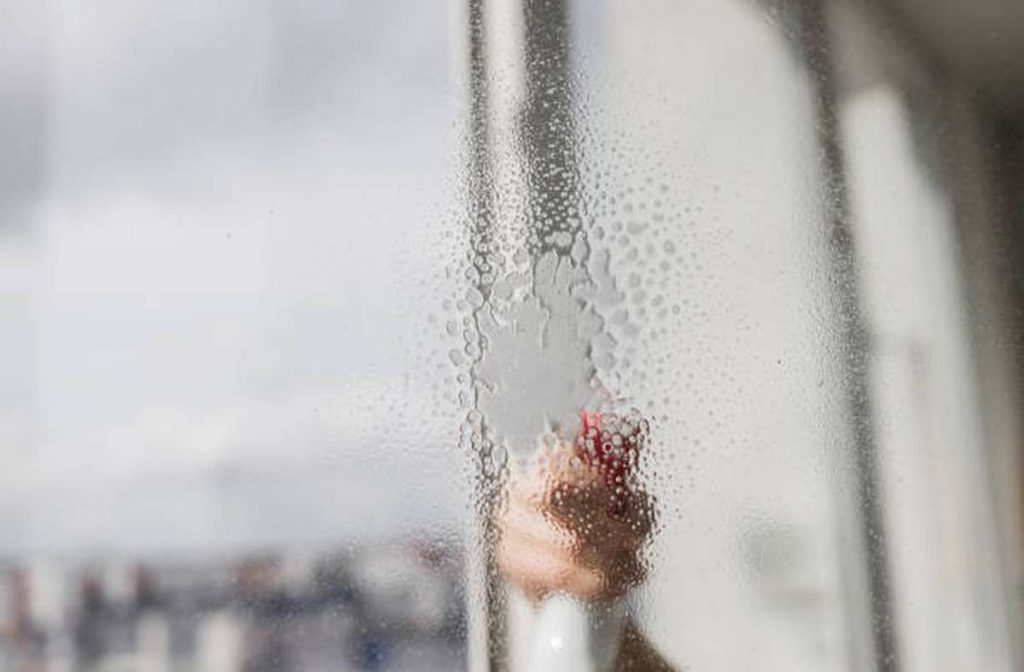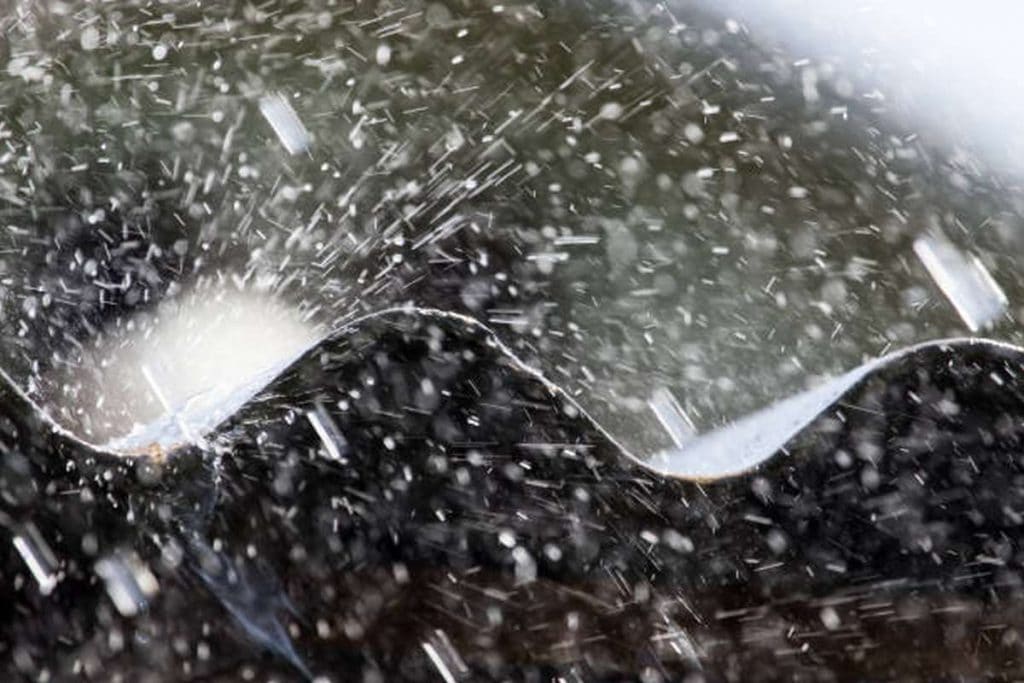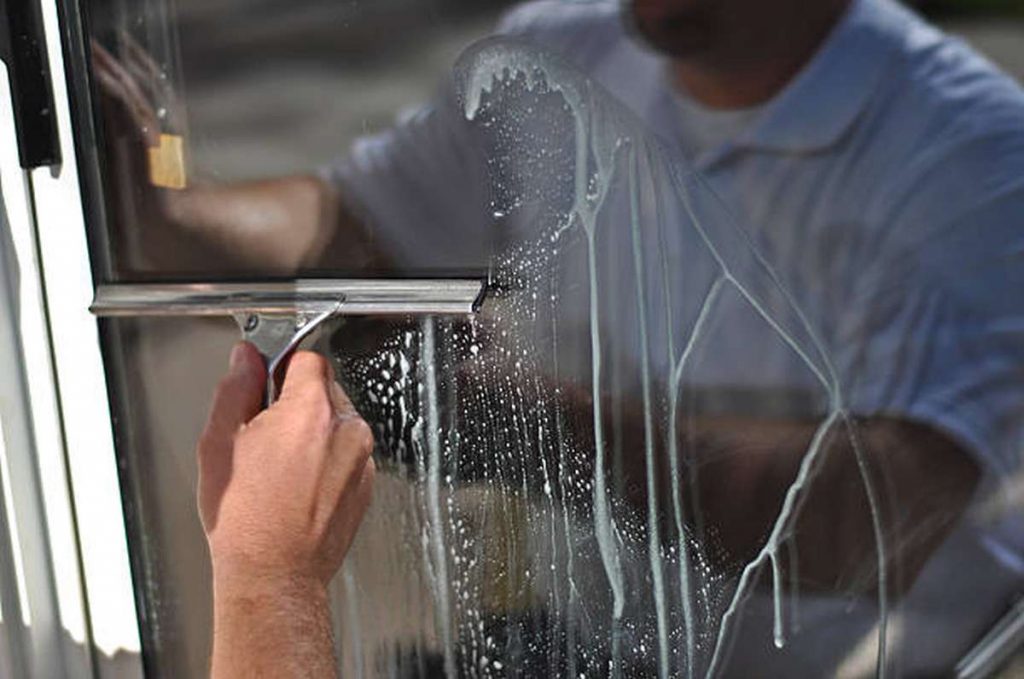Let's face it, no one likes to clean windows - not the inside of them nor the exterior. It’s an arduous task that can take what feels like forever and often leads to considerable frustration because windows are tricky to get streak free!
Fortunately, with the proper techniques and materials you can quickly learn how to make your windows shine from street level. In this blog post we explain all the necessary steps for properly cleaning a window; ensuring you get a sparkling result every time!
Tips For Getting Your Windows Ready To Be Cleaned
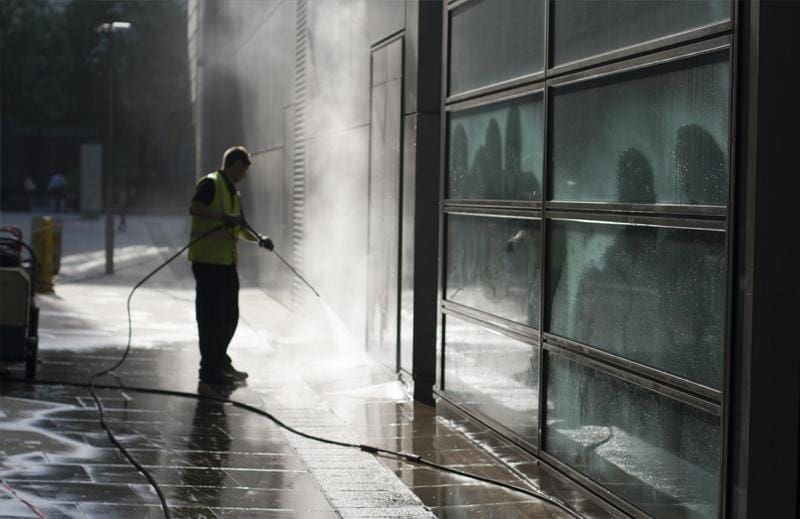
Wait to wipe down your windows! If you take a few precautions beforehand, you may avoid damaging your blinds or window sill and ensure that you clean every inch of the area. Melbourne's Pressure Washing is the most trusted and reliable pressure washing company in all of Melbourne!
The suggested procedure is as follows:
- To catch trash and stop water from collecting on the wood, lay a cleaned, drying towel across the sill.
- Pull up your blinds to the highest point of the window, close the louvres (or slats), and dust them.
- Window coverings made of fabric should be taken down to prevent damage from water. Just give them a little shake before putting them away, or, if they are machine washable, give them a quick spin on the air-dry option in the dryer. Doing so will eliminate the dust and keep it from settling back onto the windows after cleaning them.
- Take out the screens, name them so you remember which window they go to, and put them somewhere secure until you're ready to clean them.
- Do a quick sweep of the frames, hinges, and tracks to remove any dust or debris. To do this, grab an umpire brush from the sporting-goods store and use it to clean the area around home plate. It fits well into those narrow cracks and gaps.
- Only wet the windows with dry sweeping to avoid mixing the water with the accumulation and causing muck.
How To Clean Windows Without Leaving Water Marks
- Avoid using ammonia- or alcohol-based glass cleaners. Although they appear to provide a deeper clean, they often leave behind streaks and sometimes even a thin coating that attracts dirt & humidity. Cleaning a stubborn stain may require starting with a solvent such as methanol or isopropyl alcohol applied to a wash rag and rubbed directly on the stain. After drying it off, proceed with your regular window cleaning.
- Never attempt to scrape anything off with a razor or other blade, regardless of how stubborn the material may be. If your windows get scratched up badly enough, they may become easier targets for would-be burglars.
- A gentle, lint-free wipe is recommended for applying the remedy. Use a microfiber cloth to get the best results, although a soft, clean paper towel will do the trick. To reduce the likelihood of streaking, rub in several directions.
- Try a different cleaning method if you clean a window and it still has streaks after rinsing with clear water.
How To Clean Windows With Various Chemicals
- Use a reputable commercial cleaner brand if you must buy a product.
- You can buy a ready-made vinegar-based solution or follow our easy instructions for making your own.
DIY Window Washing Remedy
- One of our favourite tricks for cleaning windows is to mix up a batch of white vinegar (also known as distilled vinegar) on your own. You can easily locate this item if you still need to get it lying around. Its acidic makeup makes quick work of the flaky film that might build up on your windows and other hard surfaces.
- Use a spray sprayer to combine one part of white vinegar with ten parts of warm water.
- Before spraying your solution on the window, wipe it down with a soft, spotless, lint-free cloth or a paper towel to eliminate dust.
- Rub the vinegar solution into the stained areas of your window using the lint-free towel. If you're cleaning a wooden, fibreglass, or vinyl frame, be careful not to get any cleaning solution on the finish.
- To provide the best possible drying results, use a clean cloth to wipe down the window. This should be done as soon as possible after cleaning to avoid streaking; if you have numerous windows, it is better to do each one completely before moving on to the next.
- If cleaning doesn't remove all streaks, rinse with clean water.
Cleaning Big Windows With Vinegar
- If you have big windows, you can't reach with a plastic container and a cloth; you can use a bucket and a solution of about half a part vinegar with ten parts water.
- Take a sponge, soak it in the solution, and then wipe the window. Nonetheless, it would help if you moved as rapidly as possible to reduce the risk of streaking.
- When wiping the solution off the glass with a squeegee, start at the top and work your way down. To prevent drips, wipe the squeegee's edge after each use.
Clean, streak-free windows are a visual and tactile delight. After you've finished cleaning all of the windows in your home, you may go on to the frame's interior. Unfortunately, the accumulation of dirt and grime on the frames might eventually lead to discolouration or even breakage.
When this happens, your window may become stuck or cease to operate because dirt and debris have become stuck in the tracks. Our Residential Pressure Washing utilises specially formulated cleaning agents applied at low-pressure to clean your home.
Ensure the window's other sections are clean, functioning, and aesthetically pleasing. That's merely routine upkeep for your windows. In addition, professional cleaners and handypersons are available for hire if you need more confidence in your housekeeping abilities.
How Often Should Windows Be Cleaned
How often and with what method should we clean the inside and outside of our windows?
To keep your windows looking good and functioning properly, you should clean the images once or twice a year. However, if you live near the beach and are constantly exposed to salt or are in a busy city and close to major roads and industrial sites, you may need to clean the frames more frequently.
Water stains, dust, and filth will accumulate quickly if window glass is not frequently cleaned. We advise using warm soapy water, but be careful not to use too much dish detergent, as the residue from the bubbles can be seen on the windows afterwards. Always use a fresh, lint-free microfiber cloth and fresh water to avoid smearing dirt. To mop up spills, use a clean, soft cloth. Use a commercial glass cleaner or a homemade solution of equal parts distilled vinegar and warm water when done. If you spray this on the glass and wipe it off with a damp paper towel, the glass will be as good as new.
Window Cleaning: Common Mistakes And How To Avoid Them
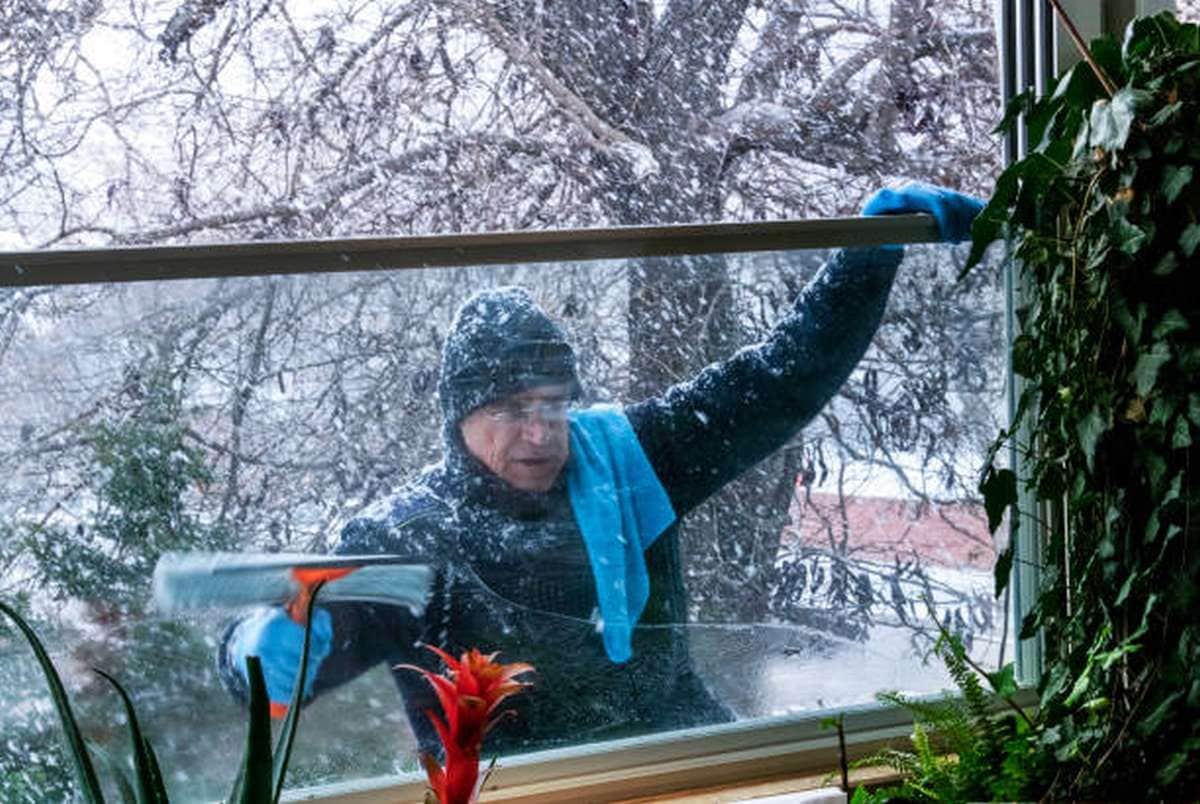
Cleaning Your Windows On A Sunny Day.
Cleaning the windows in the hot sun will leave stubborn streaks because the cleaner will dry them before you can wipe them off. Start on the shaded side of the property if the sun isn't cooperating.
Cleaning Up Messes By Spraying Cleaner On Them.
You should remove any dust or debris from the window pane by hand with a brush or by vacuuming it with a pressure washer or dust attachment. Combined with cleanser, this will keep grime from turning into a muddy slope. If the dirt on your window screen is very thick, remove it and give it a good scrub with hot, soapy water and a gentle brush.
In order to swiftly remove dust from shades or blinds, using a microfiber duster on both sides or opening the slats and wiping each with a damp cloth, then a dry one.
Squeegeeing Or Wiping Down.
They are highly recommended by experts in the field of window cleaning, but only if used properly. For example, where does the water go when you press down on a squeegee? At ground level.
She doesn't use squeegees because of the mess and drips they can produce, but they come in handy for cleaning larger picture windows.
One Day For Window Washing.
Once or twice each year you should clean your windows, and if you break up the process into smaller chunks, each room will take only a few minutes. To clean the glass, use a horizontal cloth on one pane and a vertical cloth on the other. If streaks do appear, it will be easy to tell if they are on the exterior or interior. Worried about the state of your windows? Relax, we can help. Pressure washing Melbourne window cleaning services will have them sparkling in no time.
Conclusion
You can rapidly master the art of window cleaning at ground level with the appropriate tools and methods. Methanol or isopropyl alcohol, two common solvents, can be placed to a washcloth and rubbed over a stain to loosen it before you try to scrub it away. Glass cleaners using ammonia or alcohol should be avoided. They trick you into thinking you're getting a better clean, but in reality, they leave behind streaks and sometimes even a thin coating that collects dirt and humidity. White vinegar and warm water can be mixed and sprayed over stained windows to remove them.
Never use a razor or other blade to try to remove something, no matter how stubborn it seems. If you're cleaning a frame made of wood, fibreglass, or vinyl, be cautious not to get any of the cleaning solution on the finish. How often should you wipe down your glass, both inside and out? Use a solution of dish soap and hot water, or a mixture of distilled vinegar and hot water. The best technique to clean without spreading grime around is to use a brand new, lint-free microfiber cloth and clean water.
If you feel uneasy about your ability to keep the house in order, you may always employ a professional cleaning or handyman. The hot sun will dry the cleaner on the windows before you can wipe them off, leaving behind unsightly streaks. Remove the screen and clean it with hot, soapy water and a soft bristled brush if the dirt buildup is substantial. To quickly eliminate dust from window coverings, use a microfiber duster.
Content Summary
- Let's be honest: washing windows is a chore no one looks forward to.
- Cleaning windows is a frustrating chore that often seems to take forever.
- You can easily learn how to make your windows sparkle from the outside with the right methods and supplies.
- This tutorial will teach you how to clean windows the right way, every time, for a shining finish.
- Until then, hold off on cleaning the windows.
- You can protect your blinds and window sill from being broken and get a thorough clean of the region if you take a few precautions first.
- Just lay a clean, dry towel across the sill to collect litter and prevent water from seeping into the wood.
- Bring your blinds up to their highest point, shut the louvres (or slats), and give them a good dusting.
- Fabric drapes and blinds should be removed from windows before a storm hits.
- In the event that they can be washed in the washing machine, simply give them a quick spin in the dryer on the air-dry setting before storing them.
- Doing so will get rid of the dust and prevent it from returning to the windows after they have been cleaned.
- Before cleaning the windows, remove the screens, label them so you know which window they belong to, and store them safely out of the way.
- Remove any dirt or debris from the frames, hinges, and tracks by giving them a cursory sweep.
- Obtain an umpire brush from a sporting goods shop and use it to scrub the ground in front of home plate.
- Its slim profile allows it to squeeze into tight spaces.
- Dry sweep the floors and only wet the windows to prevent water from becoming mixed up with the dust and creating a mucky mess.
- Glass cleaners using ammonia or alcohol should be avoided.
- A deeper clean may appear to be achieved, but sometimes streaks and even a thin layer are left behind that collects dirt and dampness.
- Never use a razor or other blade to try to remove something, no matter how stubborn it seems.
- Windows that have been scraped extensively could present an easier target for robbers.
- For best results, apply the treatment with a soft, lint-free wipe.
- For optimal results, use a microfiber cloth; but, a soft, clean paper towel will also do the trick.
- Rub in a number of directions to lessen the possibility of streaking.
- If you clean a window and it still has streaks after rinsing with clear water, you may want to try a different approach.
- If you must use a commercial cleaner, choose a well-known brand.
- Either pick up a pre-made vinegar-based solution, or make your own with our simple guidelines.
- Cleaning windows using white vinegar (sometimes called distilled vinegar) that you make at home is one of our favourite cleaning hacks.
- Should you ever find yourself in need of this item, you won't have any trouble tracking it down.
- The acidic composition of the product makes short work of any greasy film that may have settled on your windows or other smooth surfaces.
- You can use a spray bottle to mix one part white vinegar with ten parts warm water.
- Wipe the window down with a soft, clean, lint-free cloth or paper towel to remove dust before spraying the solution on it.
- Use the lint-free towel to rub the vinegar solution into the stained parts of your window.
- If you're cleaning a frame made of wood, fibreglass, or vinyl, be cautious not to get any of the cleaning solution on the finish.
- Use a clean cloth to dry the window for the best possible results.
- The sooner you do this after cleaning, the less likely you are to see any streaks; if you have a lot of windows, it's best to finish one set before moving on to the next.
- Rinse with fresh water if cleansing doesn't get rid of the streaks.
- Cleaning large windows may require a bucket and a solution of around half vinegar and ten parts water, as you won't be able to reach them with a plastic container and a cloth.
- Always clean the squeegee's edge after using it to avoid drips.
- Windows that are streak-free are a pleasure to look out of and touch.
- You can go on to the interior of the frame once you've done cleaning all of the windows in your home.
- Accumulating dirt and grime on the frames may cause discoloration or even breakage.
- If dirt and debris get lodged in the tracks of your window, it may become stuck or stop functioning altogether.
- Make sure the rest of the window is spotless, fully operational, and aesthetically pleasant as well.
- That is just typical window maintenance.
- If you aren't confident in your own housekeeping skills, you may always employ a professional cleaner or handyman.
- Cleaning the graphics in your windows once or twice a year can maintain them in good shape visually and operationally.
- You may need to clean the frames more often if you live near the seaside and are continuously exposed to salt, or if you live in a bustling city and are close to major roadways and industrial sites.
- If you don't clean your windows on a regular basis, water spots, dust, and grime will quickly appear.
- Warm soapy water is recommended, but excess dish detergent might leave streaks on the windows, so use caution.
- The best technique to clean without spreading grime around is to use a brand new, lint-free microfiber cloth and clean water.
- Use a clean, soft towel to mop up any accidents.
- When you're through, you can use a commercial glass cleaner or a mix of equal parts distilled vinegar and warm water.
- After spraying this on the glass and wiping it down with a damp paper towel, the glass will look like new.
- Clearing the panes on a sunny day.
- The hot sun will dry the cleaner on the windows before you can wipe them off, leaving behind unsightly streaks.
- If the sun isn't cooperating, begin on the shaded side of the land.
- Spraying cleaning solution on messes and wiping them clean.
- Clean the glass by hand with a brush or use a vacuum with a pressure washer and dust attachment to get rid of dust and dirt.
- When used in conjunction with a cleaner, this prevents filth from becoming a slippery slope.
- Remove the screen and clean it with hot, soapy water and a soft bristled brush if the dirt buildup is substantial.
- Use a microfiber duster on both sides of the shade or blind, or open the slats and wipe each with a damp cloth, then a dry one, to quickly get rid of dust.
- Experts in the field of window washing recommend them highly, but only when used correctly.
- When you squeeze a squeegee, for instance, does the water go somewhere?
- Down on the earth.
- Even while squeegees are useful for washing larger picture windows, she avoids using them because of the mess and drips they might generate.
- You should clean your windows at least twice a year, and if you do it in bite-sized portions, it will only take you a few minutes to clean each room.
- Put a horizontal cloth against one pane of glass and a vertical cloth against the other to clean the glass.
- In the event that streaks do form, it will be straightforward to determine whether they are external or internal.
FAQs About Window Cleaning
Simply add a 50-50 mix of white distilled vinegar and tap water to a spray bottle. Some professional window cleaners add a little dishwashing detergent to the mixture.
Several homemade cleaners can work effectively to leave sparkling glass. But for convenience and safety, the simple solution of white vinegar and distilled water is the best DIY window cleaner. It's non-toxic, unlike most commercial cleaners, and versatile enough for several cleaning projects around the house.
Just try to avoid glass cleaners that are ammonia or alcohol based, as these may leave streaks or light films that attract more dust down the road. Whether you're going the DIY or store-bought route for the cleaning solution, the best way to wipe down your windows is with a clean microfiber cloth or wipe.
The best homemade window cleaning solution is to just mix two gallons of water and about a teaspoon of dishwashing liquid together in your bucket. Some people also opt to use vinegar and water to clean windows. In warm weather, you'll get a little more working time by using cool water.
Paper towels are typically treated for absorbency, which makes them ideal for spills, but awful for glass cleaning. Instead, substitute your paper towels for something more practical, like actual cloth. Lint-free cotton cloths, like microfiber cloths, are great options for glass cleaners.



